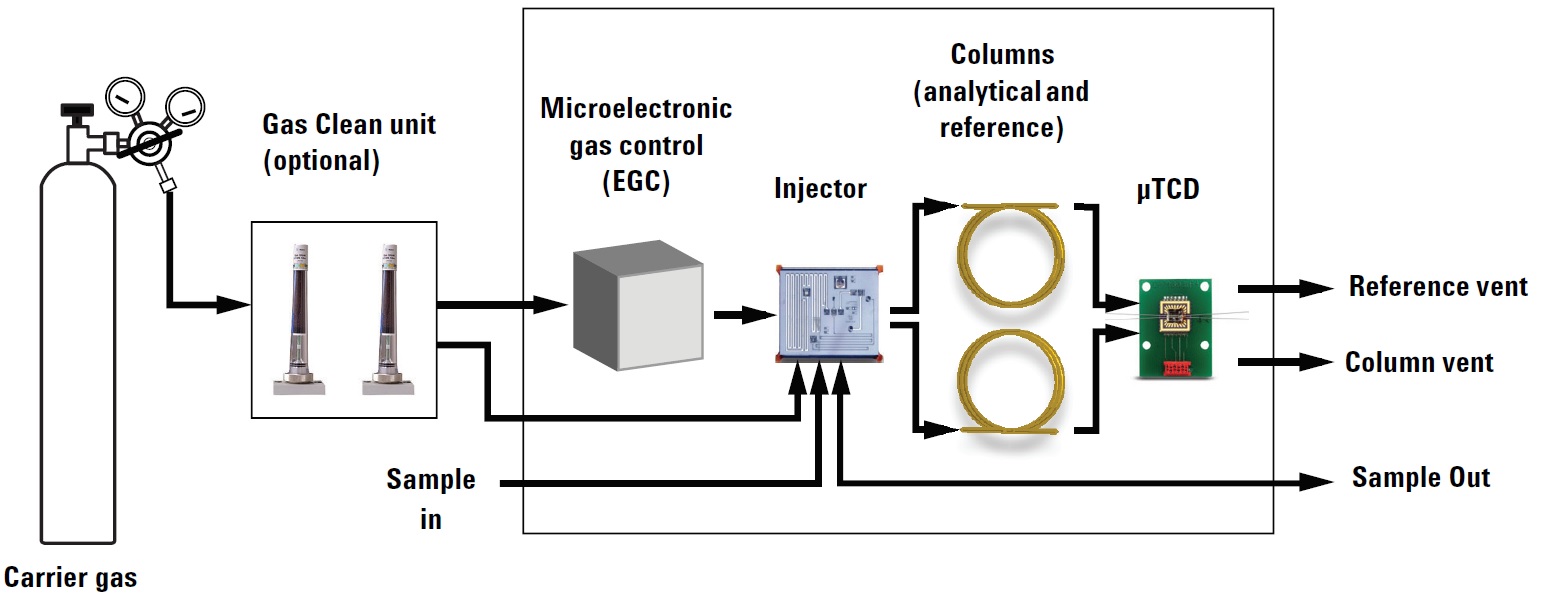Micro Gas Chromatograph
Analysis of gaseous products by MicroGC
Agilent 490 & Agilent Rack R-3000

- MicroGC Rack R-3000 Agilent
- Molsieve 5Å column: designed to separate hydrogen, carbon monoxide, methane, nitrogen, oxygen, and some noble gases;
- PoraPLOT U column: designed to separate hydrocarbons C1–C6, halocarbons/freons, H2S, CO2, SO2, anesthetics, volatile solvents.
- MicroGC 490 Agilent
- Molsieve 5Å column: designed to separate hydrogen, carbon monoxide, methane, nitrogen, oxygen, and some noble gases;
- PoraPLOT U column: designed to separate hydrocarbons C1–C6, halocarbons/freons, H2S, CO2, SO2, anesthetics, volatile solvents.
- MicroGC 490 Agilent
- Molsieve 5Å column: designed to separate hydrogen, carbon monoxide, methane, nitrogen, oxygen, and some noble gases;
- PoraPLOT U column: designed to separate hydrocarbons C1–C6, halocarbons/freons, H2S, CO2, SO2, anesthetics, volatile solvents.
- CP-Sil 5 CB column: designed to separate high molecular weight hydrocarbons (C3-C10).
- CP-WAX 52 CB column: designed to separate BTX, i.e. Benzene, Toluene, and the three Xylene isomers, all of which are aromatic hydrocarbons.
This instruments are installed at the Bioenergy & Biofuels LAB and have been funded by the Autonomous Province of Bolzano in the frame of the development of the NOI Techpark and by the Free-University of Bozen-Bolzano.
Principle of measurament
Depending on the chemical and physical properties of the different gaseous components and their interaction with the column filling, they flow out of the column at different time. The Micro GC is then equipped with a series of thermal conductivity detector (TCD), which are used to detect the components of the mixture being eluted off the chromatography columns. This detector is made with a Wheatstone bridge circuit which measures the difference in thermal conductivity between a reference cell (carrier gas only) and a measurement cell (carrier gas containing sample components).
